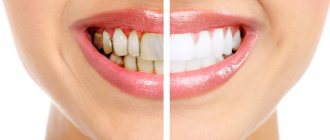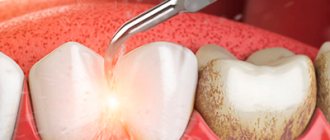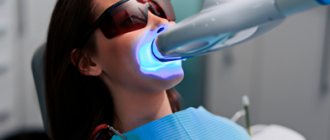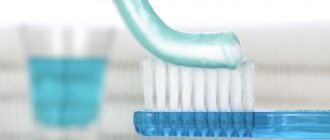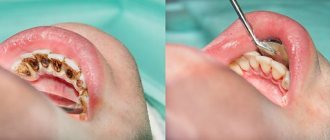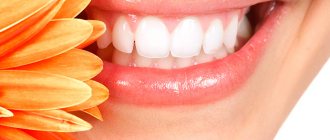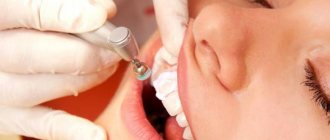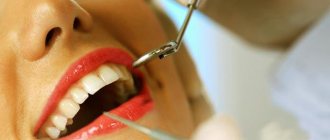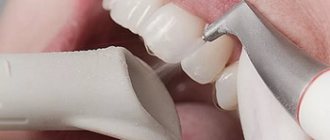- Is it painful to remove subgingival calculus?
- Is it painful to remove tartar from periodontal disease?
- Will my teeth hurt after the procedure?
- Why is tartar dangerous?
- Prevention of tartar
The choice of one or another treatment method depends on the complexity of the problem and the stage of its development.
By clicking the “request a call” button you agree to the personal data processing policy.
Tartar removal is a unique procedure that allows you to completely remove hard and soft deposits from the enamel. The first thing the patient feels after the dentist’s work is completed is the special freshness and cleanliness of the oral cavity.
The main question that interests everyone who has been recommended to clean the stones on their teeth is how painful it is. In most cases, visiting the dentist is always associated with unpleasant sensations and the expectation of pain. Although modern dentistry offers many methods of effective anesthesia and the latest treatment methods with minimal trauma.
Important. Go to brush your teeth boldly and without fear. We guarantee that after the first procedure you will brush your teeth constantly.
Preparation for the procedure
First of all, the specialist examines the client and assesses whether the condition of his teeth and gums meets all the requirements and restrictions of this procedure.
The doctor must ask about any contraindications.
Attention! Since many of them are not detected during examination, pay close attention to the relevant section of the article.
Some clinics use a special safe solution, after applying which the tartar appears on the tooth enamel in a brighter shade. This method makes the specialist’s work easier.
Traditional medicine
For those who are interested in how to get rid of plaque and tartar at home, here are some of the most effective remedies.
- Celandine decoction.
The plant is rich in acids, which help dissolve buildup when rinsing.
Attention! Under no circumstances should you swallow the decoction, since celandine juice contains toxins that can inhibit the nervous system. - Lemon and black radish juice.
This remedy is recommended to be used not only for treatment, but also as a preventive measure. - Decoction of burdock and bean pods.
The acids they contain (stearic and palmitic in burdock, and allantoic in beans) help soften the salt framework.
Important!
After using the decoction, it is forbidden to brush your teeth, since the enamel also softens and can be damaged.
Main stages of ultrasonic processing
With the exception of certain details, ultrasonic removal of tartar occurs according to the following method.
Brushing teeth with a skyler
The first stage is a rough cleaning of the teeth, which is done using a professional instrument - a scaler (scaler, scaler).
Its operating principle is based on the oscillatory movements of ultrasonic waves (up to 20 thousand hertz):
- Skyler destroys tartar and other deposits.
- The dirt is immediately washed away by the pressure of water with a medicinal composition. The dentist tilts the tip of the device, directing the stream along the surface being treated so that it does not destroy the enamel.
- Then the moisture is pumped out with a saliva ejector.
This completes the first stage. Depending on the number of teeth cleaned, it takes about 40 minutes.
The process of removing stones with a skyler
Polishing
After rough processing, more precise correction occurs using the polishing method. The purpose of this stage is to remove residual dirt, smooth the enamel and whiten the teeth.
There are two polishing techniques:
- Mechanical - using brushes and paste to treat the space between the teeth, as well as strips - strips with a solution of sodium carbonate, which are glued to the surface and after a while removed along with the remnants of foreign elements separated from the enamel;
- Hardware - by supplying a stream of water with an abrasive gel, while the Air Flow device polishes teeth better, but is ineffective for heavy deposits on the enamel that it cannot remove.
Polishing your teeth takes approximately 15 minutes.
Teeth polishing using the Air flow method
Mechanical teeth polishing
Fluoridation
At the fluoridation stage, at the request of the customer, a strengthening gel is rubbed into the enamel. Due to fluoride, it promotes the rapid restoration of weakened tooth surfaces in places with worn enamel and prevents infection.
Important! Typically, all 3 stages of the procedure are completed in one visit to the dentist. Their total duration is adjusted depending on the degree of neglect of tartar, but usually does not exceed one hour.
Fluoride teeth strengthening procedure
What is tartar
Microbes settle on the enamel during food consumption and digestion and multiply under the influence of a moist, warm environment near the gums. If they are not removed within the next fifteen hours, the process of mineralization of these organisms will begin.
After seven days, mineralization becomes irreversible, and after six months, the “dead” microorganisms turn into natural stone, the shade of which varies from yellow to dark brown.
Thus, up to 30% of tartar consists of organic compounds, and the amount of inorganic components gradually increases from 70 to 90%.
Additional Information. It is necessary to understand that the composition is not constant and varies depending on the period of mineralization. The amount of organic matter decreases with each day of hardening.
Remember that after just a couple of days of lack of careful hygiene, the film forms a rough surface that attracts even more plaque.
In addition, the occurrence of gum inflammation is beneficial to the stone, since this increases the amount of periodontal fluid, which contains the necessary salts and proteins to increase the colony of microorganisms and further mineralization.
Actions after the procedure
After ultrasound therapy, a patient with an incorrect bite must be given a pause, during which he does not put on braces.
If after the session it is planned to continue dental treatment, the patient is given several days of rest to restore areas with thinned enamel.
Then the doctor begins filling or installing dentures.
After ultrasound therapy, a patient with a malocclusion must be given a pause, during which he does not put on braces. This is also required to restore the enamel.
Also after therapy, slight bleeding of the gums is possible. In this case, the dentist takes action to stop it.
Service cost
Offers for dental correction with ultrasound are provided in private dental clinics. It is not included in the mandatory list of free procedures.
The average cost of one course varies between 1500-3000 rubles. The difference in price is due to the marketing policy of dentistry and additional actions, for example, the need for anesthesia.
In addition to complete cleaning, you can order cleaning of one or more teeth. In this case, you will have to pay from 100 to 150 rubles to clean each one.
Advantages and disadvantages of ultrasound therapy
Thorough treatment of all root canals is the main advantage of ultrasonic teeth cleaning
The most important advantage of the service is the tangible cosmetic effect.
After the session, the patient is completely free of plaque in any part of the tooth surface. His teeth become brighter due to the whitening effect.
Unlike alternative methods of mechanical and chemical action, ultrasonic vibrations are not harmful to enamel and gums, and the procedure itself is quick and does not hurt.
Modern hardware ultrasound technologies have the following advantages:
- thorough treatment of all root canals;
- smoothing the relief surface of the enamel;
- correction of teeth shade in smokers;
- teeth whitening effect.
Unfortunately, the technique is not without a number of disadvantages:
- the presence of a large number of contraindications;
- the likelihood of mechanical injuries to dentin;
- high cost of treatment;
- Ultrasonic cleaning does not provide permanent results, so re-treatment may be required after one or two years.
The extent to which the benefits of ultrasound therapy outweigh its negative aspects depends on the professionalism of the dentist. Therefore, when making an appointment, pay attention to the reviews and qualifications of the doctor who will clean your teeth with ultrasound.
Will my teeth hurt after the procedure?
Your teeth will not hurt after brushing the stone. On the contrary, the resulting feeling of freshness in the mouth contributes to an overall comfortable feeling. Your doctor may recommend using mouthwash for a while after cleansing.
Important. After the procedure, it is recommended not to eat or smoke for a couple of hours.
Do not ignore preventive visits to the dentist.
It is enough to visit a specialist 1 – 2 times a year, which will allow you to promptly identify any dental problem at an early stage of development. This means that its elimination will be quick, easy and without complications.
By clicking the “request a call” button you agree to the personal data processing policy.
How harmful can a service be?
A procedure approved by the medical community cannot be harmful by definition.
However, the method of ultrasonic cleaning of enamel requires a careful assessment of the condition of the teeth before starting treatment.
If the doctor misses the presence of contraindications or violates the order of work, the use of the device may harm the client’s health:
- cause damage to the enamel when it is weakened;
- injure the gums and cause bleeding.
More serious damage can be caused to the patient's body if he does not notify the dentist about existing contraindications.
Attention! Persons with pacemakers should be especially vigilant. Ultrasonic vibrations can damage the device that helps the heart function.
It is clear that the consequences of such treatment are not just harmful, but pose a mortal danger.
What are the benefits of a therapeutic and cosmetic session?
The correction procedure has a multifaceted beneficial effect:
- Under the influence of an ultrasonic wave, hard foreign deposits are broken down over the entire surface, including the space under the gums. This result is not available using similar methods.
- Along with the cleansing effect, the enamel whitens, which acquires a natural shade - softer and more natural than after other corresponding procedures.
- After cleaning with the device, the doctor will be able to quickly identify pathologies of the tissues of the interdental space and gums.
- The procedure is painless and much faster than other methods.
- Cleaning helps during periodontal treatment and fillings. It is often recommended to remove deposits before prosthetics.
These are only the main results that can be achieved after completing the course of treatment. The beneficial qualities of the procedure are not limited to this.
In what cases should you use this type of cleaning?
The presence of tartar and complex plaque on the teeth is a contraindication for prosthetics. Therefore, before serious treatment, the dentist will definitely recommend undergoing an ultrasonic cleaning procedure. This helps prevent complications and speeds up the treatment of periodontal disease and caries. Cleaning the tooth cavity improves the quality of the filling procedure. Using ultrasonic cleaning, you can rinse periodontal pockets and clean the canals before treatment. This procedure reduces the risk of infection after tooth extraction.
Most patients learned about the effectiveness of ultrasonic cleaning in such cases. But those who care about oral health do it regularly. In many cases, ultrasonic cleaning is carried out in conjunction with other procedures, such as teeth whitening and polishing, fluoridation and protective film coating. Often after this, the dentist prescribes special treatment to relieve gum inflammation.
Contraindications
Innovative teeth cleaning is not suitable for everyone.
The list of contraindications includes:
- Ultrasonic teeth cleaning is not suitable for everyone; there are contraindications
installed pacemakers;
- arrhythmia of the heart muscle;
- dental implants, including crowns (the doctor avoids them during cleaning);
- asthma;
- the presence of diseases of the digestive system;
- increased sensitivity of teeth;
- age under 18 years;
- Chronical bronchitis;
- tuberculosis;
- acute respiratory infections and acute respiratory viral infections in the acute or chronic stage;
- HIV;
- oncology;
- frequent bleeding in the mouth;
- allergy to components used during ultrasonic cleaning;
- liver damage, in particular all forms of hepatitis;
- pregnancy and breastfeeding period.
In addition to the listed factors, there are individual characteristics of the body, after studying which the dentist may refuse to perform the procedure. In this case, you should choose an alternative option for whitening or removing tartar.
The most common questions
Does the procedure require pain relief?
Of course, this is the question that primarily concerns patients at the dental clinic. Unlike outdated mechanical cleaning technology, ultrasound does not cause discomfort, so the average client will not need pain relief.
Anesthesia, in its mildest forms, may only be required when treating the subgingival area and if the patient has sensitive teeth.
Is it possible to remove tartar if you have untreated caries?
Ultrasound cleaning can be done for caries. The presence of a carious cavity in a tooth does not affect the operation of the device in any way. An infectious disease is not a contraindication for ultrasonic cleaning. On the contrary, during complex dental treatment, dentists often begin work by removing stones and only then begin to treat caries.
Is the device capable of removing stones under the gum?
Subgingival tartar is a dangerous defect, the damage of which sometimes leads to periodontitis. Fortunately, Skyler can remove it. The device will not only thoroughly clean the treated area, but also carry out ultrasonic polishing of the root surface.
Ultrasonic tartar cleaning - before and after the procedure
Does it hurt to clean stones on your teeth?
The specific sensations of a particular patient depend on the method of cleaning the stone on the teeth and the individual sensitivity of the person. Everyone's pain threshold is different, so you shouldn't rely on other people's reviews. What may seem intolerable to someone else will remind you of a mosquito bite and vice versa.
Important. When choosing a method for removing stones from teeth, listen to your doctor’s recommendations. The dentist makes a decision based on the results of the examination - the condition of the enamel, the amount of deposits, predisposition or the presence of diseases such as periodontal disease and periodontitis.
Ultrasonic cleaning
Hard dental deposits can only be removed using an ultrasonic scaler. Under the influence of ultrasonic waves, the stones completely crumble, while the enamel remains intact. The procedure is practically painless, but with increased sensitivity, discomfort may occur. In this case, the doctor uses special anesthesia.
A slight pain may also occur when treating gum pockets. But the feeling is quite tolerable and lasts literally a fraction of a second. Ultrasonic cleaning is the only possible way to remove hard stones from pockets, and you should not refuse to do it. It is better to warn your doctor before the procedure that you have increased tooth sensitivity.
When treating areas with enamel, that is, the teeth themselves, pain, as a rule, does not occur.
The main advantages of the method include:
- ideal cleaning quality - the enamel becomes smooth and even;
- the ability to remove hard deposits from interdental spaces and hard-to-reach places;
- bactericidal effect - pathogenic microflora dies under the influence of ultrasonic waves, which reduces the risk of caries;
- optical effect - after removing brown spots and stripes, the enamel becomes visually lighter.
The procedure for removing tartar is mandatory before prosthetics, implantation, before installing braces, and other orthopedic manipulations. Hygienic cleaning with a scaler is also indicated in cases of periodontal disease and periodontitis, twice a year. In other cases, it is recommended to remove tartar with ultrasound once every 12 months.
The duration of the procedure depends on the condition of the patient’s teeth, but, as a rule, does not exceed 40-60 minutes. In especially severe cases, the doctor performs cleaning over several visits.
There are contraindications:
- severe heart disease, the presence of a pacemaker - the ultrasonic wave can disrupt the rhythm of the heart or the device;
- pregnancy - ultrasonic cleaning can negatively affect the development of the fetus, and also lead to miscarriage or premature birth;
- increased pathological sensitivity of the enamel - here we are talking not so much about the pain syndrome, but about the reaction of the body as a whole;
- rehabilitation period after operations and infectious diseases.
Another risk factor is childhood. You can remove stones from your teeth no earlier than two years after the last tooth erupts.
Important. It is not possible to remove hard plaque from teeth at home. In fact, the stone grows into the pores of the enamel, and even the hardest toothbrush is not able to remove it.
Laser removal
From a pain point of view, the procedure is considered completely painless. The laser beam completely destroys hard and soft deposits without affecting the enamel. Dentists recommend removing tartar with a laser in cases where cleaning of the gum pockets is not required. Perhaps this is the only drawback of the procedure.
After laser cleaning, the enamel becomes smoother, its resistance to external influences increases, and the likelihood of caries, gingivitis, and stomatitis decreases. The procedure takes no more than an hour. The main indication for laser stone removal is the presence of hard plaque on the teeth.
There are a number of contraindications - pregnancy, postoperative period, decreased immunity, infectious diseases. These also include untreated caries, a large number of fillings, and increased sensitivity of tooth enamel.
Laser stone removal is an expensive procedure.
Air-Flow
The procedure involves cleaning teeth from stone using a water-dispersed mixture under pressure. Small crystals remove soft plaque from the enamel, while simultaneously polishing it. The main advantage of the technique is a high degree of teeth cleansing even in the most difficult to reach places, including gum pockets.
Air-Flow is traditionally used in combination as a subsequent step after ultrasonic cleaning. As a result, teeth are completely cleaned of hard and soft deposits. The teeth become smooth, as if polished.
The special advantages of the method include:
- painlessness - the patient does not experience discomfort even with very sensitive enamel;
- excellent result - interdental spaces, gum pockets are perfectly cleaned, pigmentation is eliminated;
- natural whitening – by removing stains, teeth become one or two shades lighter;
- hypoallergenic - the mixture contains water, fine-crystalline soda, citrus fragrance.
The effect is especially noticeable for those who have orthopedic structures installed in their mouths - crowns, braces, veneers, implants. The procedure is also recommended for regular use by smokers and lovers of strong tea and coffee.
Removing stones from teeth using this method is contraindicated:
- patients with respiratory diseases - to avoid a possible attack;
- with thin enamel and pathological sensitivity of teeth;
- with caution during pregnancy.
The procedure is carried out in 30-40 minutes, while the patient experiences a feeling of comfort, which is facilitated by a light massage of the gums.
Complete cleaning of teeth and interdental pockets reduces the risk of caries to a minimum.
Chemical removal
It is also possible to clean off old tartar chemically - this method is now used extremely rarely, only in cases where ultrasound and air flow are powerless. A composition containing chemically active substances is applied to the enamel. Under their influence, the stone softens and is cleaned manually.
The method is painless, but is not recommended for thin enamel, increased tooth sensitivity and the presence of open carious cavities.
The second name of the procedure is chemical bleaching. The enamel becomes lighter by 3-4 tones.
Mechanical cleaning
The procedure is extremely unpleasant and is now practically not used anywhere. Hard tartar and soft plaque are removed with special metal spatulas. During the manipulation, there is a high risk that the doctor’s hand may slip and the instrument may damage the gums. The effectiveness of the method is in question, since it is not possible to completely remove deposits.
